A Brief Chat With Matt Phillips About Tanglewood (Interview)

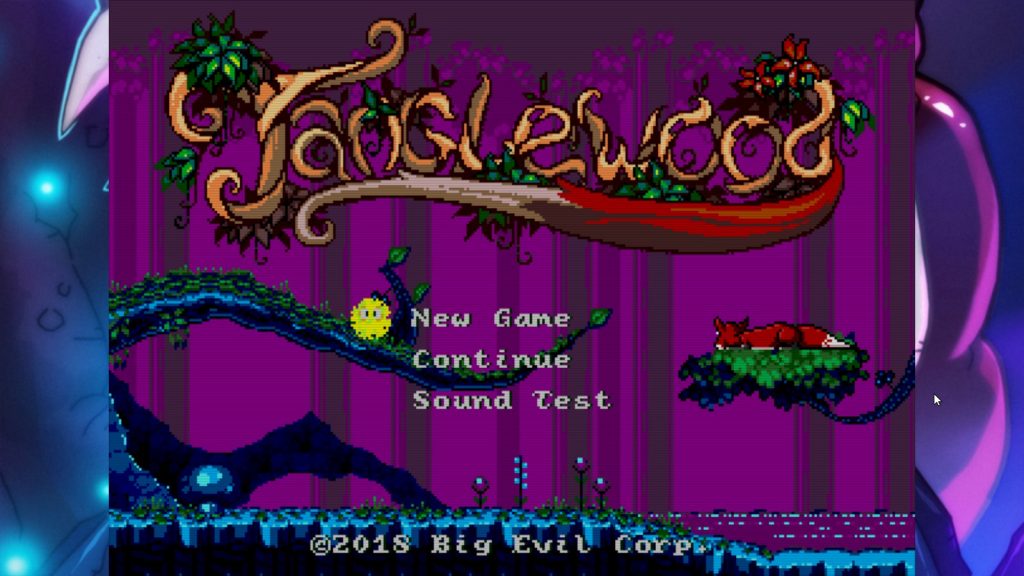



Source: Review Copy
Price: £13.99
Where To Get It: Steam
It’s an interesting world we live in, right now. A time where the oldest computer systems are starting to die, and parts to fix them have become short in supply, due to the simple fact that nobody really makes the chips any more. So when I heard about Tanglewood, a game which was developed for the Genesis (or Mega Drive, if you prefer) using the devkit, and, indeed, was also produced in cartridge form, I had to take a look.
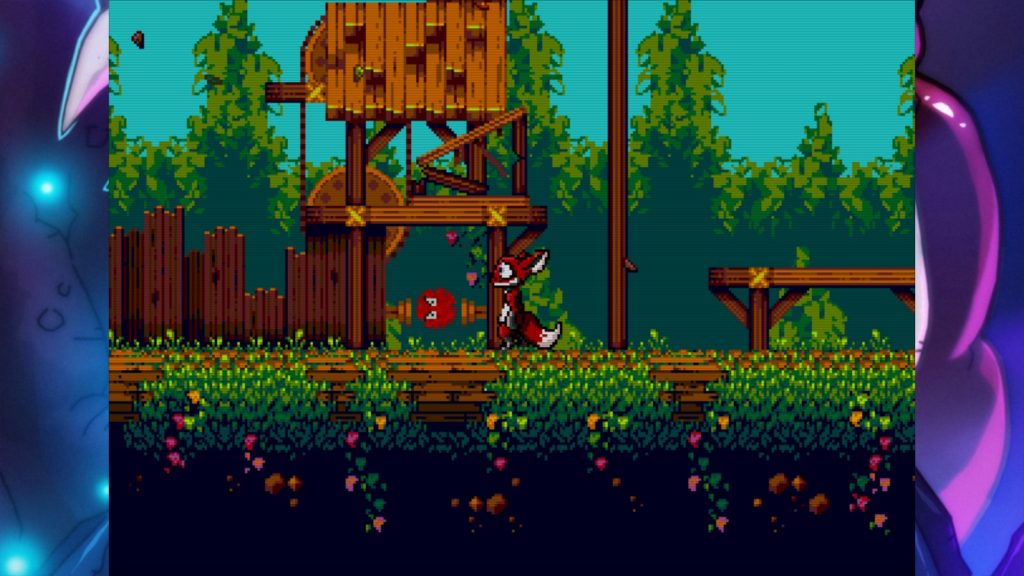
I would, on the face of things, be perpetually angry if this was my purpose in life too.
And you know what? It isn’t bad. Emulated on its PC/Steam release, it works fairly well within its limitations, to create a somewhat minimalist puzzle platformer about a fox… Living in a supernaturally cursed forest. And this fox’s only friends are rocks… and fluffy balls called Fuzzl, who grant Nymn, the lost little fox, special abilities if rolled back to their nests.
So let’s get the bad out of the way first, because, thankfully, it’s somewhat brief. Movement has a fair amount of inertia, and not all the platforms have that extra bit of jumping room most platformer players are used to, so it’s better to jump slightly earlier than you think you’re meant to. Also, if you’re pushing something, and an enemy is coming for you, it’s quicker to let go of the controls, then jump, than let go of the push button while still moving, and trying to jump. Finally, the early Djakk (Big, quicker than you beasties with big teeth) chases can be a pain in the ass to nail due to water screwing with your jump timing. End of things I don’t like.
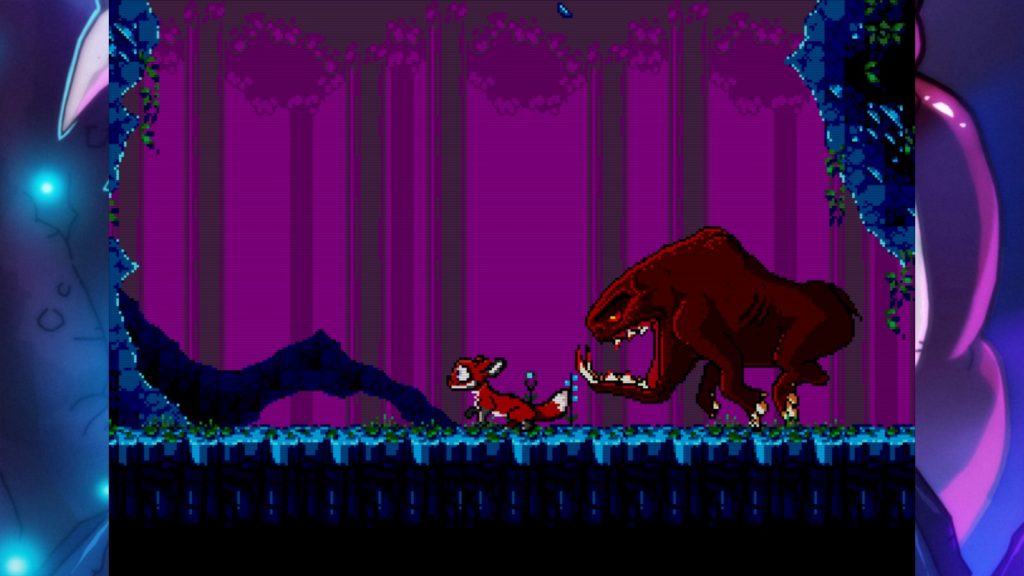
RUNRUNRUNRUNRUN!
Otherwise, it’s tough, but fair. Eight chapters, split into relatively short segments, and each introduces its concepts quite well. Chapter two, Act three, for example, has lightning as its primary antagonistic element, and this is shown very early on with a Hogg directly showing the consequences of being out in the open (IE – Nothing above you.) Clear, quick, direct. No lives system, so while there are stakes, you’re not pressured into perfection first time, and checkpoints are, for the most part, very sensible, being at the start and end of each “puzzle.” With three buttons, each with a clear function, and a nice in-game manual available in the ESC menu, it’s also fairly accessible, and I didn’t have any trouble distinguishing between visual elements. So… That’s fairly nice!
Aesthetically, the game is somewhat minimalist, but in a pleasant way. Each chapter has a day, an evening, and a night theme to it, with some ambient noise every now and again, and small musical stings for each area. Otherwise, it’s fairly quiet, and for this, it works, because often, you’ll hear enemies and Fuzzls before you see them, and, considering death is mostly by contact, this is a good setup. It also fits the mood well, as the feel of threat is increased by the silence… Well, for anyone who’s been to a forest and understands why that’s a bad sign, anyway.
As such, the good outweighs the flaws in Tanglewood, and I feel pretty comfortable recommending it for folks who like platform puzzlers. For those interested, there’s also a brief interview with Matt Phillips, head of Big Evil Corp, on the site as well.
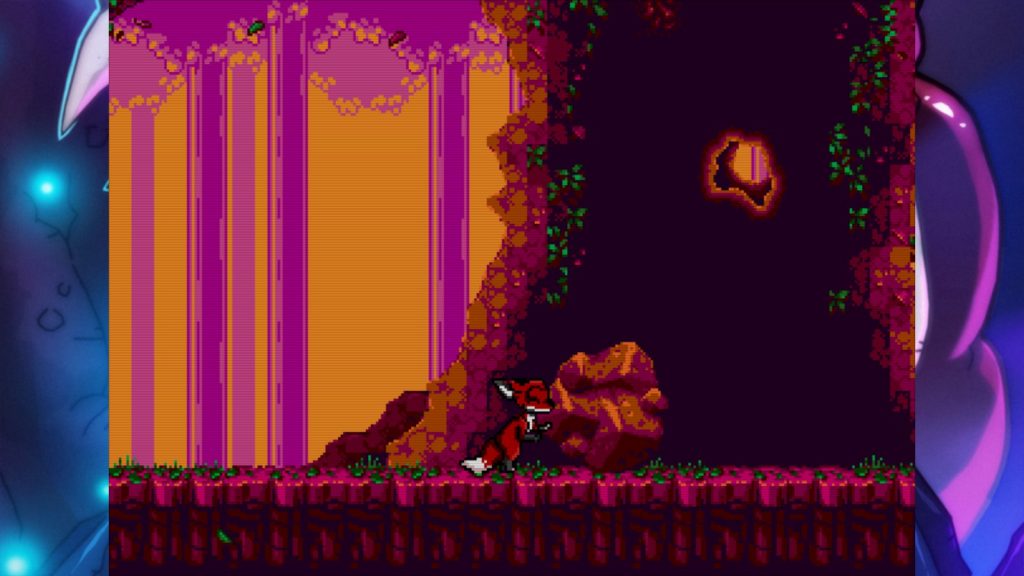
On the one hand, pushing drastically slows you down, be it a big or small object. On the other, most of the time, it’s pretty low pressure.
The Mad Welshman is somehow surprised he was caught off guard by the death-squirrels. He already knew they were… ogoshsocuteARGHMYFACE.

Source: Cashmoneys
Price: £12.39
Where To Get It: Steam
Version Reviewed: Second Update (2/8/18)
Other Reviews: Early Access 2
The post mutation landscape is one hell of a place, alright. A wide open world, filled with all sorts of folk. Death is pretty much certain, and if it isn’t from violence, it’s from losing all hope in a world where old Homo Sap has been replaced by Homo Instert-Here-As-Many-Times-As-Necessary.
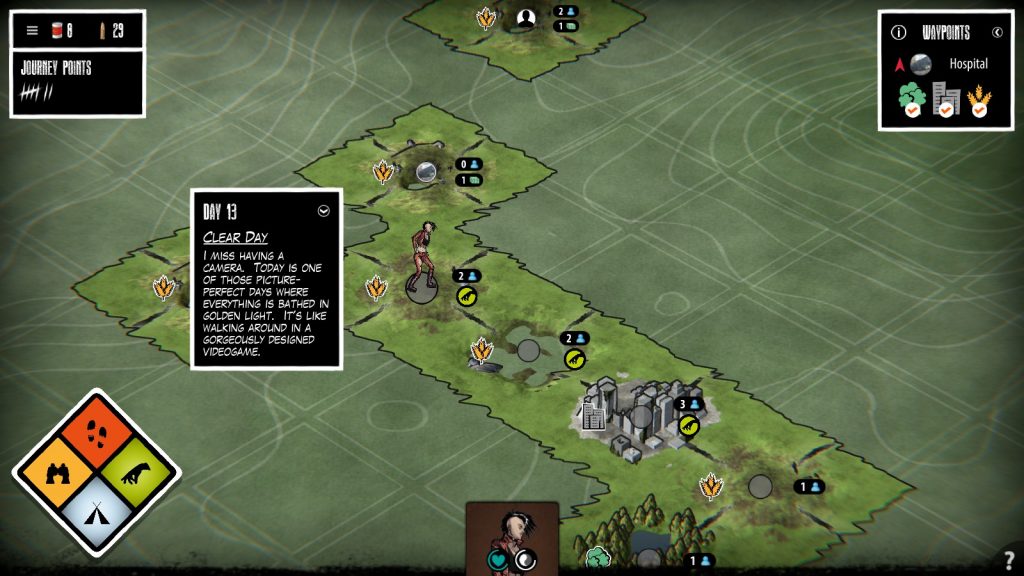
The contour lines are a nice touch, visually speaking, and I like the clarity.
Welcome to Posthuman: Sanctuary, a not-quite adaptation of the survival board game of the same name. Although, at the present stage, the major shift from the board game, a story mode, is not available. Still, there’s survival mode, and, right now? That’s a fairly replayable doozy, with a few quibbles.
The overall idea is that you’re trying to get to three specific waypoints on the map, eventually reaching the fabled Sanctuary. However, to get there, not only do you have to unlock those waypoints by visiting certain tile types (Forests, Mountains, Rural Areas, and Cities) in a specific order before you get to them, you have to deal with hunger, morale, the loyalty of any fellow survivors you meet along the way, mutants… And the possibility you’ll mutate yourself (At which point you’ll no longer be welcome in this strictly human sanctuary.) Not having had the foresight to scan the surroundings yourself (and with Google Maps long gone), you don’t actually know much of what’s beyond your safezone, beyond the existence of the waypoints, and certain survivors.
Add in weather, the fact you take one action a day (out of Scouting, Moving, Foraging, and Camping), and it costs food per day, combat, and events, and… Well, good luck!
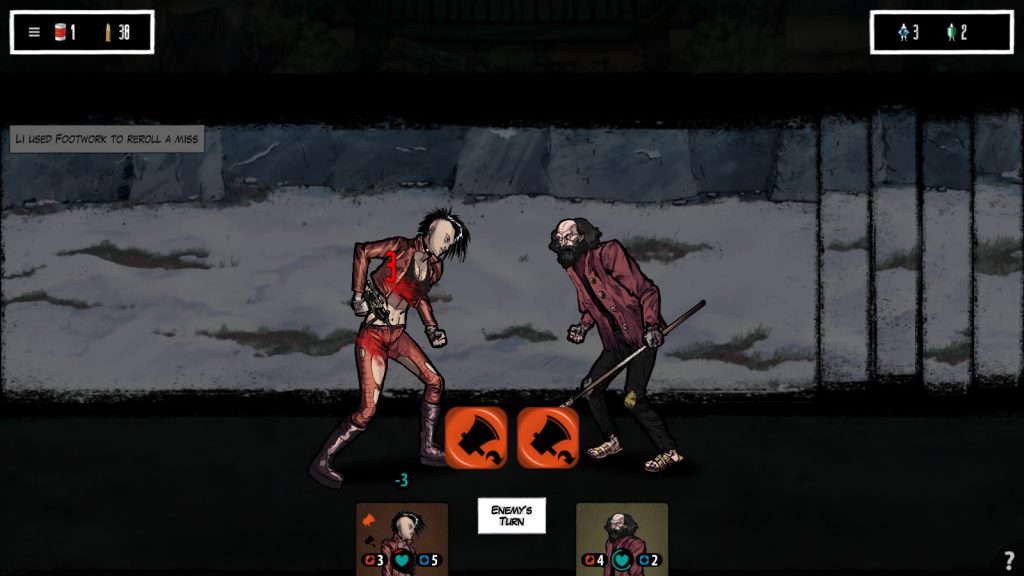
A fine example: Karl Marx murdered me just a turn or two after this picture. Turns out the Kommune are badasses.
Aesthetically, the game is currently fairly good visually, with a clear, comic like style, and musically alright, with tracks that aren’t intrusive, but fit their mood quite well. The UI’s pretty clear, although it must be said that it would be nice, certainly, to know how many survival points I have to my next character unlock.
It would also be a good time to point out that hitting the options at the start, minimalist as they currently are, would be a good idea due to the simple virtue of noticing that there are R Rated events, and turning them off if you don’t like that idea. They may well be on the level of “I slept with this person, and it felt good” , but I can understand that’s not for everyone, and the game has enough to deal with as it is. Funnily enough, post apocalyptic settings are not nice places to be, so I’ve dealt with lynch mobs, cannibals, mutant haters and human haters alike, and a bundle of other not nice folks.
Apart from that, and my other niggle that once you select an event, you can’t seem to unselect it (which has been rather trying when I misclicked) , the game, honestly, feels alright at the present stage. Combat is easy to understand, the board portion is easy to understand, and I haven’t felt dicked over any more than I would expect in a board game, in a post apocalyptic setting, where life is kinda rough. It’s nice to see a clear UI, and explanations of events easily accessible, the events are interesting, the world seems interesting, and I look forward to seeing more.
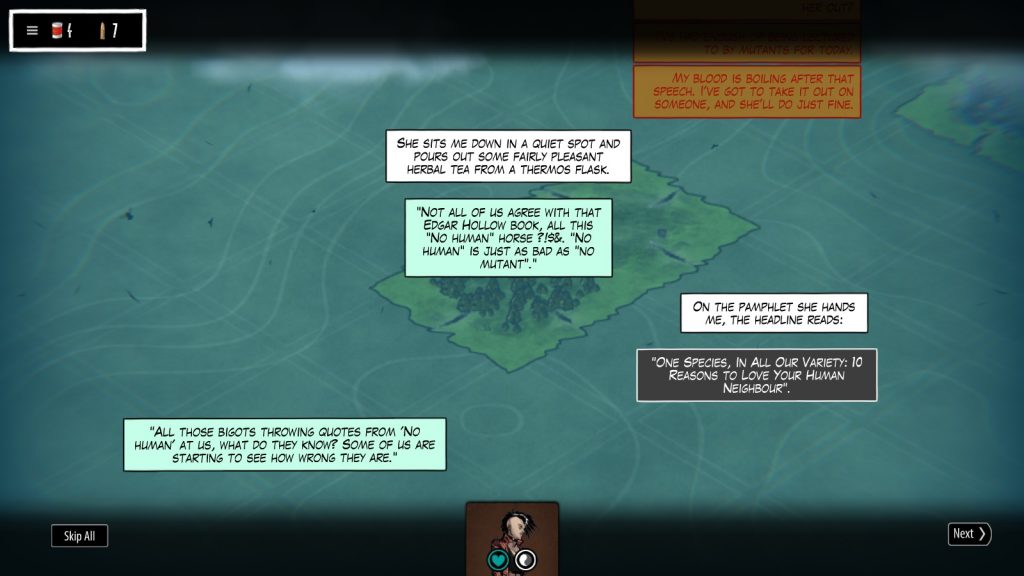
On the one hand, shades of grey, fairly nice. On the other, it’s basically Mutants/Humans right now, which… Well, that’s an approach that has its issues.
The Mad Welshman would probably be a bad survivor. An okay tyrant, sure… But a bad survivor.

Source: Cashmoneys
Price: £9.29
Where To Get It: Steam
Version Reviewed: 8/8 Update.
Other Reviews: Release
Wayward Souls is, at the present time, a game with no in between. Not completely, as health is a bar, special abilities are ammo or inventory based, and, even with death, money is accrued which can be put into character abilities. No, I’m mainly talking, at the present time, about one of the core features of Wayward Souls: The enemies.
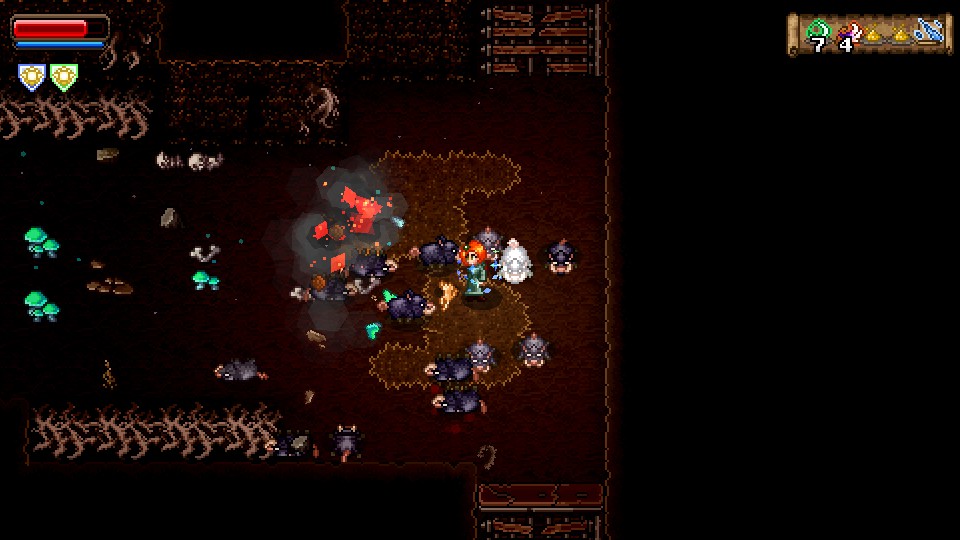
Swarmed by boars. Cause for concern? Well… Not really.
Enemies, in Wayward Souls, are either light speedbumps, or lethal terrors… And there’s no real in-between to the two. Bats? Well, they’ll hurt you if you’re inattentive, sure. But that’s usually because you’re worrying more about the five fellers throwing rocks and pickaxes, or the big crushy robots that only die when they charge into a wall twice. But pickaxe wielders are never really a problem on their own, despite their aiming. Rock fellers lose most of their threat once they switch to melee mode… Even within enemy types, there are states where the challenge swiftly moves from “Will most likely get hurt if I tangle with this (and I have to, because I’m locked in with it)” to “Will only catch me unawares if I’m literally asleep.”
The problem being that this feeling of the seemingly arbitrary bleeds over into other areas. Why are some areas of the mine, the first dungeon’s major locale, almost unreadably dark, while others are brightly lit enough that everything is clear? Unknown. Why do I feel absolutely nothing about spending a ramping amount on what may end up 16% crit chance (1,2,4,8,16), and may end up a measly, overexpensive 5% (1,2,3,4,5)? Well, the clue there is that both numbers aren’t exactly big, and spending money on an individual character is an investment you maybe want to feel something about (In the majority of cases, I don’t.) Why was switching healing at the end of the level with, er… Finding a healing fountain you can use once per level considered a change, rather than a restatement of “You only get one heal per level of the dungeon?” I don’t know. All I know is how I feel about them, and I don’t particularly feel great.

Sometimes, there will be ghosts. Who have somewhat interesting things to say.
Thing is, Wayward Souls has some good ideas hidden in the murk of this oddly arbitrary feeling balance. Splitting up dungeons is good. Having different stories for the different characters (some of whom are unlocked via progress), giving different perspectives… That’s good. Being able to pick your playstyle, to a certain extent, with characters… That’s good. And some of the enemy designs are, to be fair, very nice, the music is nice, and the sound works well… Heck, it even has the nice touch that your grave messages can be seen by friends (or people with the friend code), and you can leave gifts with those grave messages. That’s a genuinely nice touch…
…But, at the present time, the core of the game, the fighting of enemies, feels not so much like a gradation, slowly moving upwards, but a chaotic jumble of the easy and the rough, slapped together. I have more trouble with levels than I do the bosses, and even that isn’t a hard and fast rule, and that… That just feels wrong.
Maybe Wayward Souls will improve. But right now, the enemies feel oddly inconsistent, the early levels feel muddy, and the interesting ideas the game is presenting just aren’t saving it.
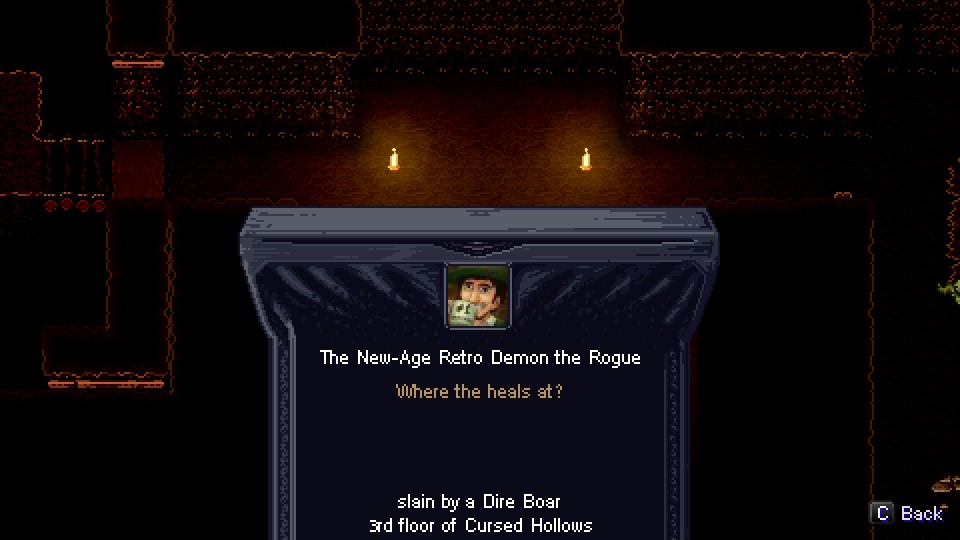
On the one hand, an amusing message from a bud is its own reward. On the other, the protection buff definitely didn’t hurt either.
The Mad Welshman reminds developers: Do not throw the baby out with the bathwater, and always consider interesting ideas when you see them.

Source: Cashmoneys
Price: £19.49
Where To Get It: Steam
Being an Archaeologist is, in many senses, about being observant. Clues can be as subtle as a passage in a book, the curvature of glacially moulded hillscapes, or the precise composition of a flint arrowhead, and it’s important to be able to see, to understand what you’re seeing. Being a Ninja, if we go by popular depictions or otherwise, is about being observant. Being a covert agent is all about what you perceive, about how quickly you can sense danger, and, equally, about seeing opportunity where others merely see a surly major-domo (for example.) In both cases, livelihood (and sometimes, your life) depends on being able to clearly see the clues set in front of you by circumstance.
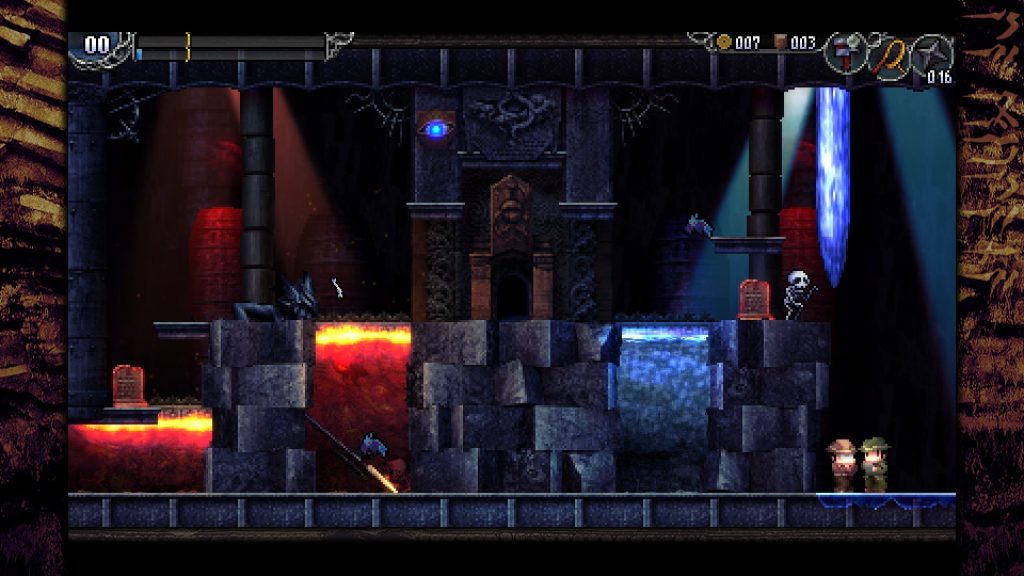
“Do not pursue Le-Meza!” doesn’t have quite the same ring, but yes, the protag’s dad always seems to be near the most devlish traps. I’m in the *POISON LAVA* on the left. Terrible parent, I swear…
And so, funnily enough, it is with La Mulana 2, a game that does explain its puzzles… It’s just not always in the places you’d expect. This is less surprising when you consider that the only family line to have successfully explored the La Mulana ruins (and, with your control, hopefully explore the Eg-Lana ruins that seemingly coincide with them) is a family of… Archaeologist Ninjas. Lemeza and Shawn, from the last game, and, the main protagonist of this game, Lemeza’s daughter Lumisa.
So, for those just catching up, La Mulana was, and is, a love letter to the MSX (One of Microsoft’s early attempts at “A computer on every desk” , an 8-bit system that found popularity in quite a few places, but most notably Japan and Brazil), and the action adventures that could occasionally be found on the system. It’s an action platformer, but with puzzles of all stripes, some of which will kill the unwary instantly, a variety of enemies, and, of course, bosses… Some of whom will kill the unwary instantly. Save early, save often, and investigate things. Oh, except that tablet. They told you not to read that tablet for a reason, don’t do that. That’s the Hard Mode Tablet.
Don’t say I didn’t warn you. Or that the game didn’t.
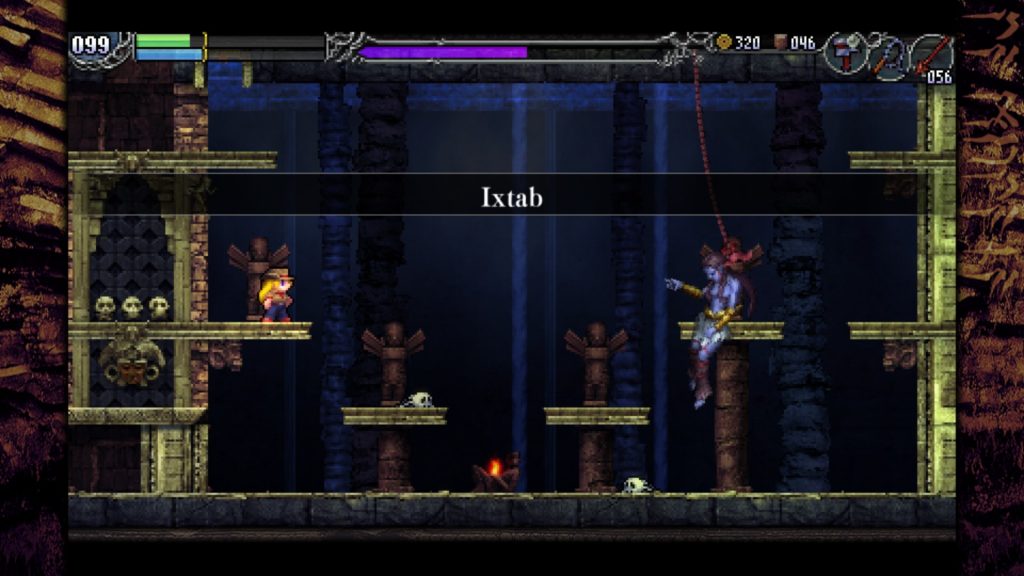
Bosses and NPCs alike take from a variety of mythological sources, from the Aztec, Mayan, Norse, and Celto-Gaelic cycles. Ixtab, for example, is the Mayan goddess of… Well, you can probably guess. 😐
Overall, La Mulana 2 is a more focussed, somewhat improved version of its predecessor. Awkward to no air control has become “A little air control” (and jumping puzzles designed around this), the early game is less punishing (You can, with just a little prep, take on all the minibosses and boss of the first area without serious weapon upgrades), the writing’s improved a little, and the art style is about the same as the remaster of La Mulana 1 (Solid pixel art, combined with some amusing hand-drawn characters for the conversations.) It controls relatively well (although the keybinds take some getting used to, and, even as an 8-bit kid, it took me a short time to figure out that F2 is for inventory, settings, and apps, and F1 is for conversation, the area map (if you’ve found it), and the area teleport interface. Swimming is still somewhat painful, alas, but we can’t have everything.
Thing is, La Mulana 2 does exactly what it sets out to do: Be a tough, but mostly fair adventure platformer, with a sometimes humorous, sometimes tragic setting where not only were all myths real, they all had a single source, a progenitor who, as it turned out, just wanted to go home… And the world ending threat she represented. So, on the one hand, this review is very much a “Does what it says on the tin”, and, considering the Kickstarter campaign was on the platform of “Back this, and I will make a game that kills your character repeatedly” (not the exact words, but close enough), and the first game worked on exactly this notion… Yes, it does what it says on the tin. But I thought I’d finish up this review by describing the core loop of gameplay, because most people who get turned off by the game get turned off by the second part of the loop, and maybe hearing it will help.
At first, everything is very simple: You’ve opened doors, you’ve got the map to the area, you’ve remembered to ensure you can teleport to the area (by scanning the holy grail you normally save with), and you’ve killed pretty much everything you can kill that stays dead, such as minibosses. Good on you… But of course, the game isn’t over, and the question then arises… Well now what?
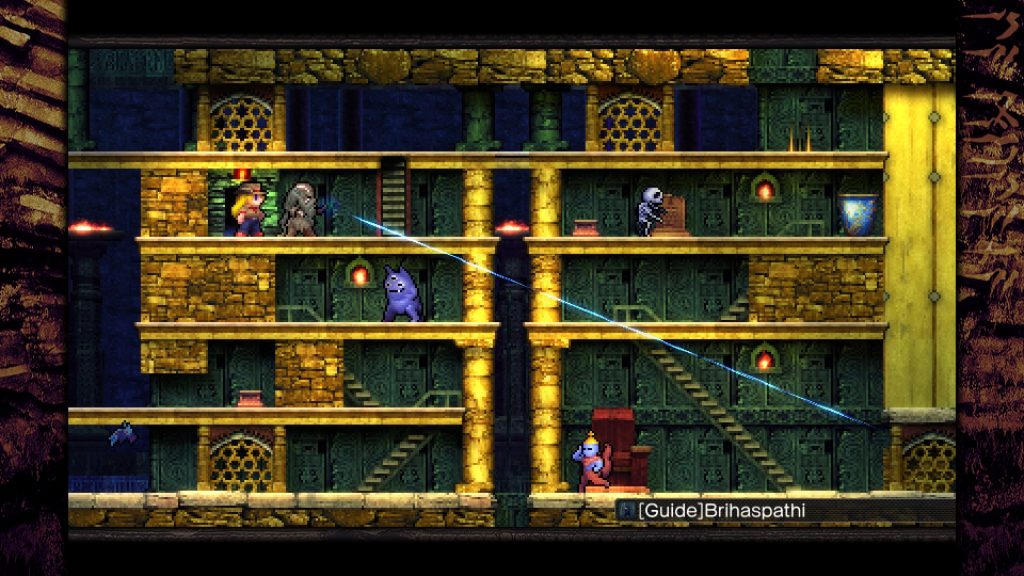
Once you’ve figured out part of the puzzle, the rest tends to fall into place. Which, let’s face it, is a good feeling.
Well, now you need to go somewhere new, solve some new puzzle, obviously. And sometimes, it seems like there’s no way forward. One optional example here is the chain whip. It’s a useful weapon, like your whip, but does double the damage, which is just enough not to hear the dreaded “tink” of “Haha, nope, this enemy didn’t even feel that.” But getting it involves observation, and the fact that you have water (poisonous), ice water (poisonous and cold), lava (hot), and poison lava (hot poison, and no, I’m not joking. Poison lava. Just for added “Screw you.”) All I will say is that identifying which is which is very valuable in determining whether a path is suicidally impossible… Or do-able, providing you know how to deal with the swimming. This is one example of where the way forward is there… You’re just not seeing it. Drawings on tablets give you hints to what these cryptic texts are talking about. Tablets tell you about things… Walls can look different, maybe crumbly, maybe hollow.
And then you find a way forward, and it probably kills you, because of something you hadn’t seen before. Sometimes it’s a miniboss. Sometimes it’s a new enemy. Sometimes, it’s gotcha traps, which, I’ll grant you, are a turn off (although even these mostly give clues to their presence… Even if the clues, sometimes, are bait.) But you know a way forward. Due to the relatively nonlinear nature of the game, it doesn’t even have to be the same path your friend took (I got two sigils before my friend did, but had to look at his footage to see where the hell the chain-whip was, for example.)
That, in the end, is the core of La Mulana 2: Explore, probably die a lot, save often so the deaths set you back less, find clues, find cool items and mythological beings to talk to (or fight), solve those puzzles, beat those bosses, eventually save the world, hopefully have a good time doing so. Despite being horribly stuck, I’m having fun, and I hope folks who get the game (if they do after reading this) enjoy it too, because while it’s sometimes old school, it’s a lot more fair than the old-school I’m used to. Looking at you, old text adventures… BITE LIP… Who the hell thinks BITE LIP is the proper solution to a puzzle, I ask you…
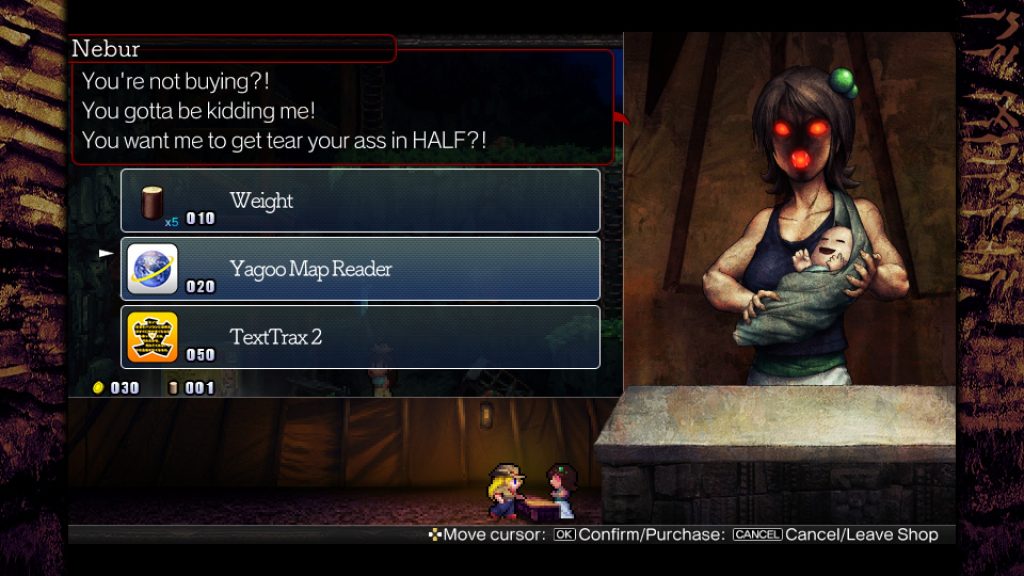
Even returning characters get some impro-H GODS, ALRIGHT, I’LL BUY SOME WEIGHTS, JUST DON’T HURT ME!
The Mad Welshman will draw the curtain on this review, to save you from a rant about the bullshittery of old text adventures… For now.